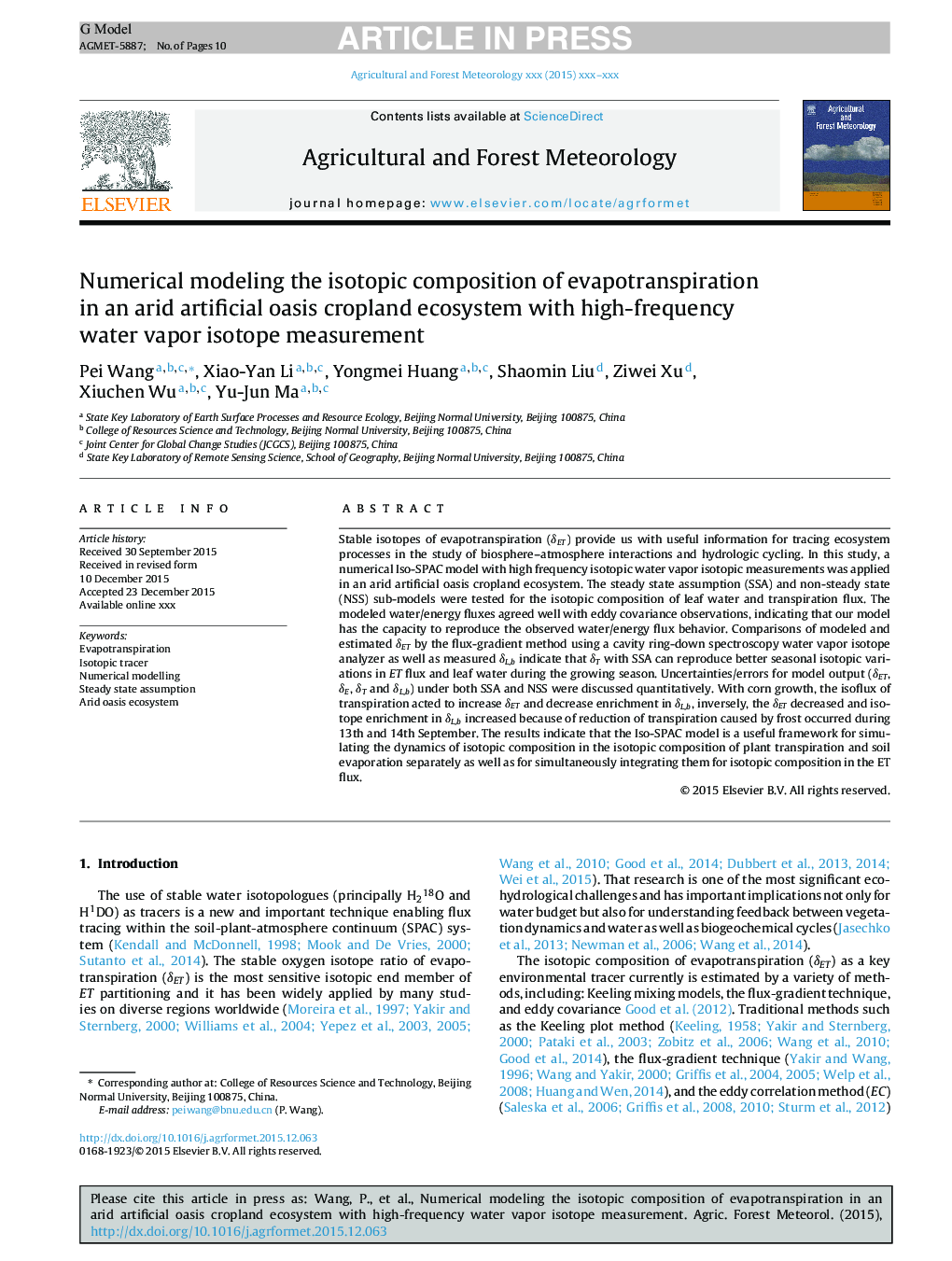| Article ID | Journal | Published Year | Pages | File Type |
|---|---|---|---|---|
| 4758980 | Agricultural and Forest Meteorology | 2016 | 10 Pages |
Abstract
Stable isotopes of evapotranspiration (δET) provide us with useful information for tracing ecosystem processes in the study of biosphere-atmosphere interactions and hydrologic cycling. In this study, a numerical Iso-SPAC model with high frequency isotopic water vapor isotopic measurements was applied in an arid artificial oasis cropland ecosystem. The steady state assumption (SSA) and non-steady state (NSS) sub-models were tested for the isotopic composition of leaf water and transpiration flux. The modeled water/energy fluxes agreed well with eddy covariance observations, indicating that our model has the capacity to reproduce the observed water/energy flux behavior. Comparisons of modeled and estimated δET by the flux-gradient method using a cavity ring-down spectroscopy water vapor isotope analyzer as well as measured δL,b indicate that δT with SSA can reproduce better seasonal isotopic variations in ET flux and leaf water during the growing season. Uncertainties/errors for model output (δET, δE, δT and δL,b) under both SSA and NSS were discussed quantitatively. With corn growth, the isoflux of transpiration acted to increase δET and decrease enrichment in δL,b, inversely, the δET decreased and isotope enrichment in δL,b increased because of reduction of transpiration caused by frost occurred during 13th and 14th September. The results indicate that the Iso-SPAC model is a useful framework for simulating the dynamics of isotopic composition in the isotopic composition of plant transpiration and soil evaporation separately as well as for simultaneously integrating them for isotopic composition in the ET flux.
Related Topics
Physical Sciences and Engineering
Earth and Planetary Sciences
Atmospheric Science
Authors
Pei Wang, Xiao-Yan Li, Yongmei Huang, Shaomin Liu, Ziwei Xu, Xiuchen Wu, Yu-Jun Ma,
